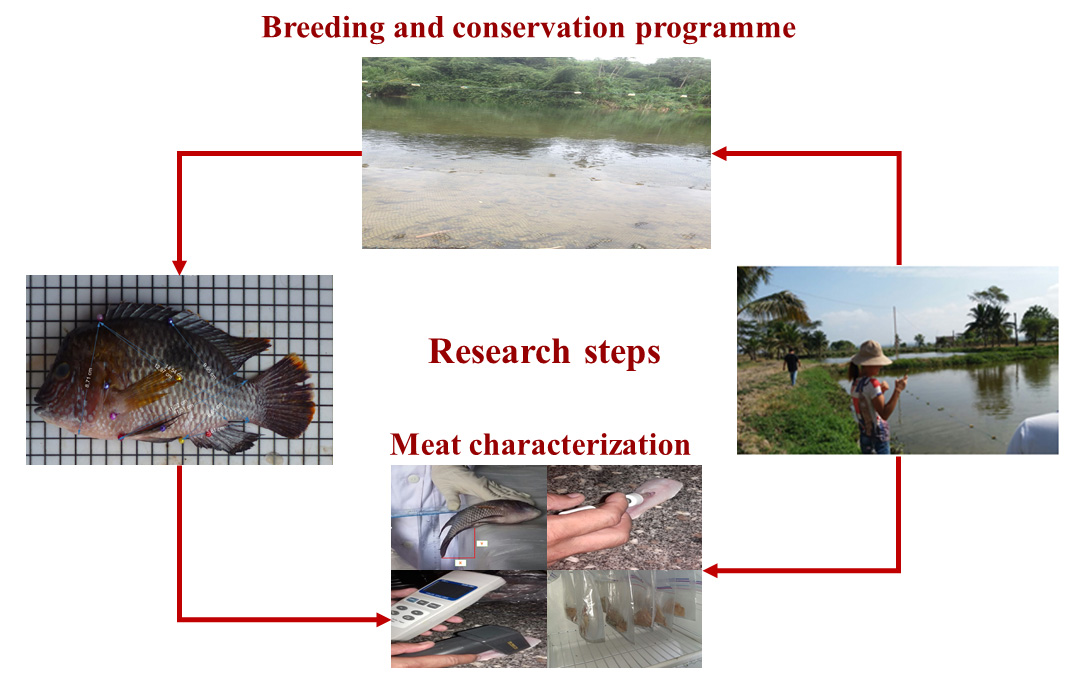Effect of rearing system and sex on the composition and fatty acid profile of Andinoacara rivulatus meat from Ecuador
DOI:
https://doi.org/10.48162/rev.39.056Keywords:
freshwater fish, flesh attributes, proximate analysis, mineralsAbstract
This study evaluated the influence of rearing system (cultured vs. wild rearing systems), and fish sex on carcass and flesh traits of A. rivulatus, raised in Ecuador. Three hundred mature specimens from A. rivulatus were captured, 150 from each origin. Slaughter yield and dress-out resulted similar for both rearing system, and average fillet yield for cultured fish was significantly higher than for wild fish, while cooking loss was significantly lower. Dress-out was significantly higher in females. Significant differences were found in wet percentage, ash, fat and protein content in both rearing systems, but only wet percentage was significantly affected by sex. Palmitic, oleic and arachidonic acids had the maximum percentage of saturated (SFA) and mono/poly unsaturated (MUFA/ PUFA) fatty acids, respectively. In cultured and wild fish, differentiations were also found in PUFA/SFA, docosahexaenoic acid (DHA)/eicosapentaenoic acid (EPA), atherogenicity (IA), and thrombogenicity (IT) indices, along with P, K, Mg, Cu and Fe. Sex and rearing system significantly influenced most of the analyzed characteristics of carcass and flesh of A. rivulatus. Fillet high yield and its proximate composition categorize A. rivulatus as a suitable food. These results provide valuable nutritional information about native species for consumers in Ecuador.
Highlights:
- The rearing system (cultured vs. wild rearing systems), and fish sex affect the carcass and flesh traits of A. rivulatus.
- Fillet high yield and its proximate composition categorize A. rivulatus as a suitable food.
- The proximate composition of fillet from cultured A. rivulatus is more adequate than those of wild A. rivulatus.
- The cultured A. rivulatus contains higher n-3 and n-6 PUFA percentages and adequate n-3/n-6 ratio.
Downloads

Downloads
Published
How to Cite
Issue
Section
License
Copyright (c) 2018 Revista de la Facultad de Ciencias Agrarias UNCuyo

This work is licensed under a Creative Commons Attribution-NonCommercial-ShareAlike 3.0 Unported License.
Aquellos autores/as que tengan publicaciones con esta revista, aceptan las Políticas Editoriales.










.jpg)




